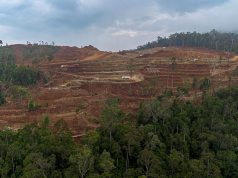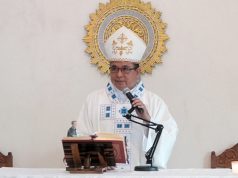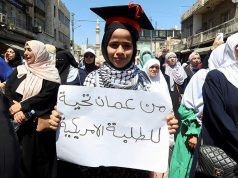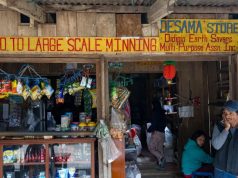
Support for the ongoing global climate strike pioneered by teen activist Greta Thunberg persisted in the Philippines despite being considered the deadliest place in the world for environmental activists.
The Philippines was among the 150 countries that pledged to participate in the large-scale protest calling for governments and businesses to take action on the climate crisis.
Some Filipinos noted the contrast of support for Thunberg and numerous deaths linked to environment activism in the country.
Filipino singer Bituin Escalante made this point on Twitter.
“You can’t support Greta Thunberg and support a president who villainizes IPs and environmental activists,” she said on September 22.
You can’t support Greta Thunberg and support a president who villainizes IPs and environmental activists.
In this country, an activist like her would have been red tagged by the military and even EJKed.— bituin escalante (@gobituin) September 22, 2019
Twitter user @maroontito, meanwhile, also pointed out that members of the Lumad community were accused of being terrorists when they speak up on the destruction of their ancestral homes.
*Greta Thunberg, a climate change activist calling out the current US government for lack of action*
Pinoys: Wow! Such an inspiration!
*Lumad children speaks out against destruction of indigenous lands and militarization in IP communities*
Pinoys: Brainwashed ng NPA!!!
— Tito Maroon #UPFight (@maroontito) September 24, 2019
Global Witness, an international watchdog for environment and corruption, reported that at least 164 environment activists were murdered in 2018. The staggering number makes the country the most dangerous for environment and land campaigners.
Aside from the Philippines, Colombia (24 deaths), India (23 deaths) and Guatemala (16 deaths) were also on the list.
Vicky Tauli-Corpuz, United Nations Special Rapporteur for Indigenous Peoples, said that most victims were indigenous peoples who were defending their rights to their ancestral homes.
“This is a phenomenon seen around the world: land and environmental defenders, a significant number of whom are indigenous peoples, are declared terrorists, thugs or criminals for defending their rights. This violence is a human rights crisis but it is also a threat to everyone who depends on a stable climate,” Tauli-Corpuz said.
Despite such risks, local environmental agencies such as Greenpeace Philippines and Stop Kaliwa Dam Network continued to campaign for environment protection during the week-long Global Climate Strike.
Thunberg started a worldwide phenomenon through a lone school strike in 2018 called “Fridays for Future.”
She made international headlines again when she spoke at the United Nations Climate Action Summit in New York City on September 23.
Part of her oft-quoted speech read:
“You have stolen my dreams and my childhood with your empty words. And yet I’m one of the lucky ones. People are suffering. People are dying. Entire ecosystems are collapsing. We are in the beginning of a mass extinction, and all you can talk about is money and fairy tales of eternal economic growth. How dare you!”
Dangers of environment activism in the Philippines
Members of local environmental organizations were interviewed by international media outfits aboutt the types of risks or danger they face with their campaigns.
Most of the risk factors they face allegedly came from the military and illegal mining companies.
Threats and killings
Jaybee Garganera from The Alliance Against Mining shared that the scariest he experienced was when he received a strange call from someone who knew his personal details, including the location of his residence.
“Of course, I asked them why are were doing that and they said, ‘Why are you wondering? It’s because you’re up against powerful and big players here with what you’re doing,’” Garganera told a host of Public Radio International.
Leon Dulce of Kalikasan admitted in an interview by National Public Radio that violence had been part of their work for years that at times it can be desensitizing.
However, there are still incidents that shocked them and affected them deeply.
Labeled as terrorists
Lives of environment activists in the Philippines are always at risk, Dulce said, as they tend to be seen as “enemies of the state.”
“They are being told that we are terrorists. We are enemies of the state, no? And then the more extreme cases is, when they think they vilified you enough, they start sending in the death squads. They start sending in the infantry battalions,” Dulce said.
Martial law in Mindanao
The presence of military personnel in Mindanao makes it difficult for activists to rail against mining there as they would easily be tagged as terrorists or rebels.
“Martial law is still in effect in Mindanao and that’s problematic because the presence of the military in many of the communities affected by mines, logging or plantations are easily justified. When you have opposition to these projects it’s easy for local communities to be tagged as bandits or rebels or communist insurgents and that adds another layer of complications to local communities,” Garganera shared. — Artwork by Uela Altar-Badayos









